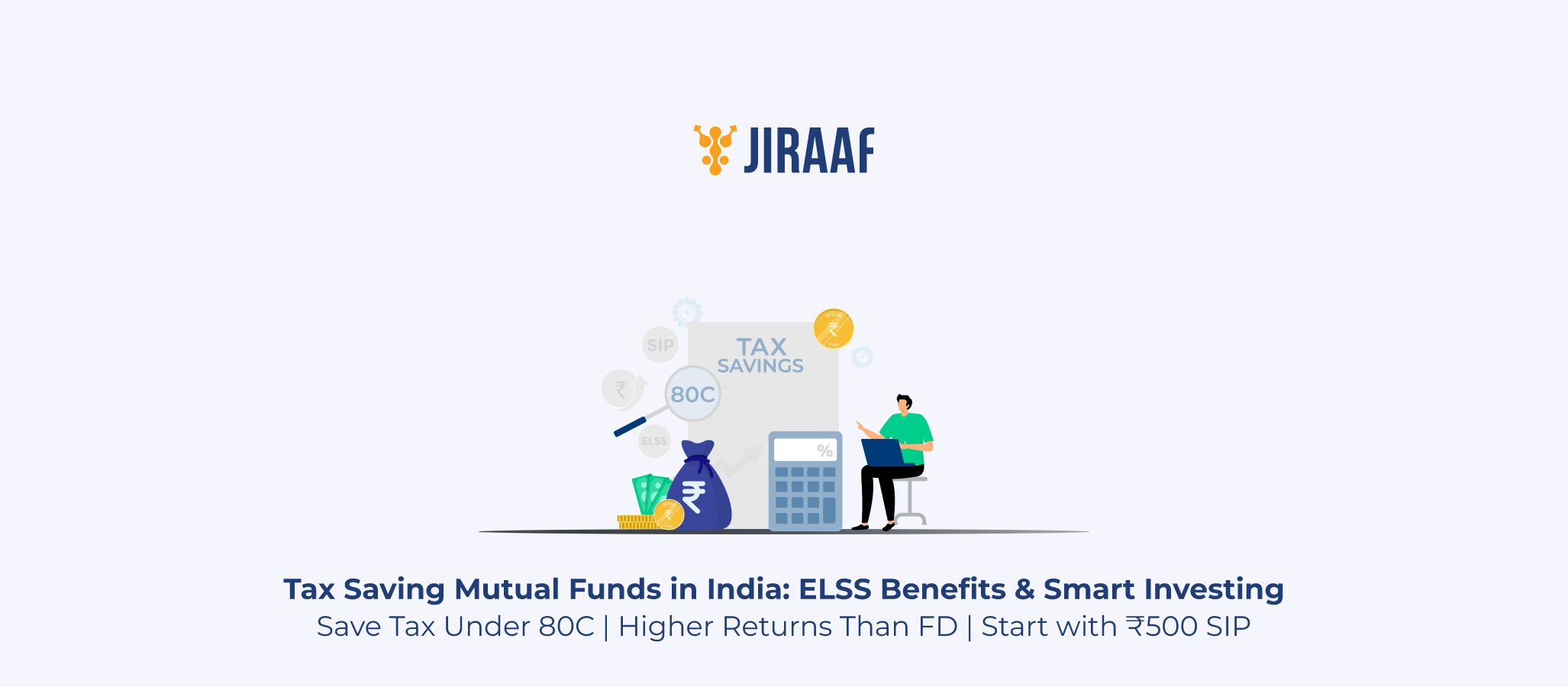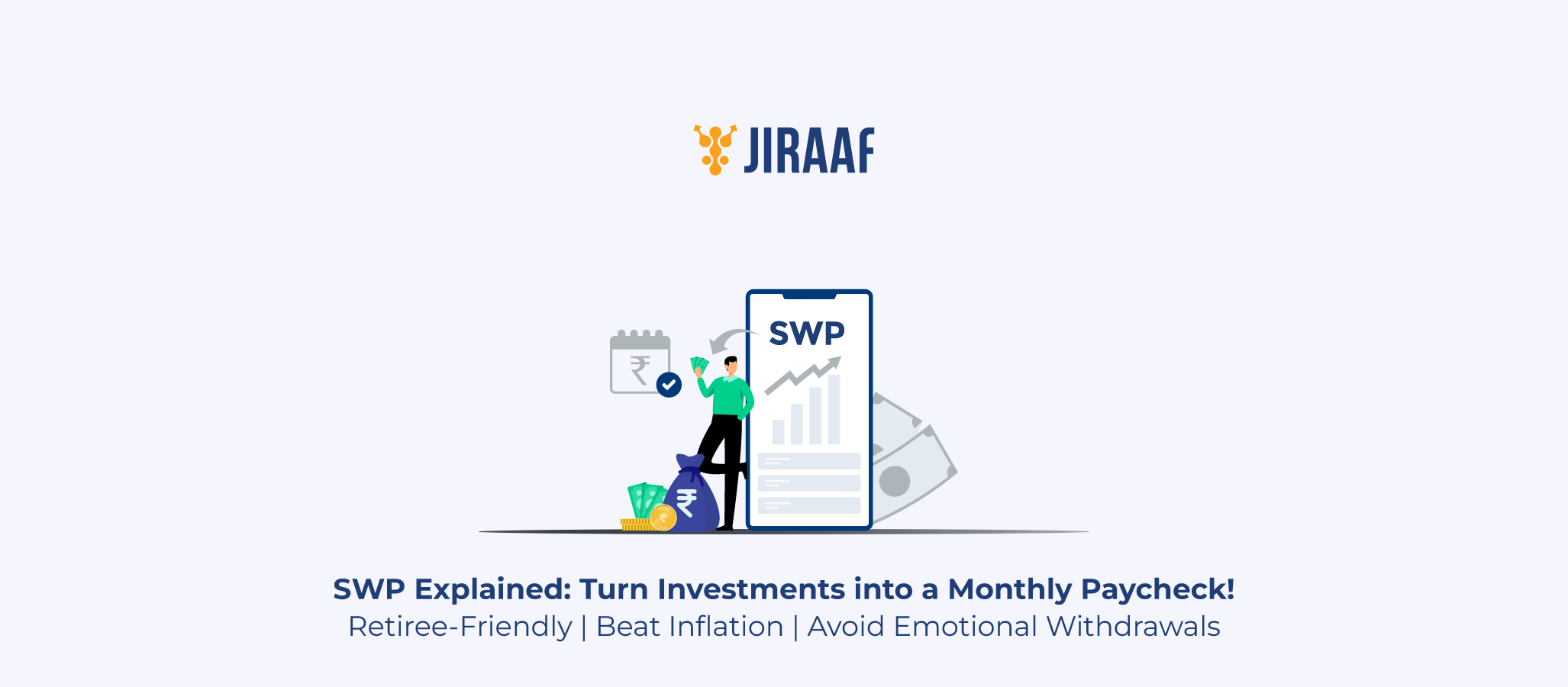If you want to grow wealth while reducing tax liability, a smart way to save close to ₹ 1.5 lakh annually under section 80C and perhaps earn higher returns than other conventional options like PPF (Public provident fund) or FDs (Fixed deposits) is through tax-saving mutual funds, especially ELSS (Equity-Linked Savings Scheme). These funds are great to grow your wealth in the long term because of their market-linked growth structure, flexible systematic investment plan (SIP) starting at just ₹500 per month, and short three-year lock-in period.
What is Tax Saving Mutual Funds?
Tax-saving mutual funds are those which invest as a minimum 80% of their assets in stocks. They are ELSS plans that come with certain tax advantages under Section 80C of the Income Tax Act, 1961. The short lock-in period of three years, offered by no other section 80C options helps you cultivate good investing habits that make sure you succeed in the long-term when you choose to invest in equity-linked instruments. You should consider investing in this since it offers the dual benefits of tax savings as well as the possibility of higher returns than conventional tax-saving investments like FDs, NSC, NPS, etc.
Benefits of Investing in Tax Saving Mutual Funds
- Monetary Benefit: Earn market-linked returns (~ 12–15%) while avoiding taxes under Section 80C (up to ₹1.5 lakh per year).
- Lock-in Period: 3 years is the shortest lock-in, compared to 5 to 15 years in PPF/NSC.
- Creating More Wealth: Because of equity exposure, there is a chance for much higher returns than FDs or PPFs.
- Investments are Flexible: Begin with a lump sum amount or SIPs as small as ₹500 per month.
- Tax Benefits: Up to Rs. 1.5 lakh in tax benefits are offered for tax-saving mutual fund investments. Under the ELSS mutual fund schemes, long-term capital gains upto Rs. 1.25 lakhs are tax-free, whereas those over Rs. 1.25 lakh are subject to 12.5% LTCG tax. The ELSS plan eliminates the need for a single investment by enabling monthly SIPs (Systematic Investment Plans) and the diversified portfolio reduces risk and guarantees that you won’t pass up any valuable chances.
- Dividends: Although the principal amount cannot be withdrawn during the lock-in period, dividends that you earn can be.
How to Invest in Tax Saving Mutual Funds?
- Choose between active and passive investments: There are both actively and passively managed tax-saving mutual funds. Professionally managed active funds have higher costs but strive for superior performance. Passive funds, which frequently mirror market returns, automatically track an index at reduced expenses. Select passive for cost-effectiveness or active for possible larger profits; both offer Section 80C benefits with a 3-year lock-in.
- Set your budget: You can start with as little as ₹100 in mutual funds. Therefore, the amount you want to put in is up to you. Depending on your tax calculations, you can also match the numbers and determine how much should be invested to reduce your taxes.
- Make your purchase: To optimize Section 80C benefits, you are ready to invest after you’ve established your budget. Fund houses and brokers provide end-to-end service, a wide range of selections, and professional advice.
- Check the expense ratio: Every mutual fund comes with an expense ratio, which is a fee charged for managing the fund. It’s important to understand this cost before investing, as a high expense ratio can significantly reduce your overall returns over time.
Best Tax Saving Mutual Funds in India (2025) based on the AUM
The following list of the top five tax-saving mutual funds (ELSS) in India for 2025 is based assets under management (AUM):
| Name | AUM (Fund Size) |
| Axis ELSS Tax Saver Direct Plan-Growth | ₹35,358 Cr |
| SBI Long Term Equity Fund Direct Plan-Growth | ₹29,667 Cr |
| Mirae Asset ELSS Tax Saver Fund Direct-Growth | ₹25,567 Cr |
| DSP ELSS Tax Saver Fund Direct Plan-Growth | ₹16,974 Cr |
| HDFC ELSS Tax Saver Fund Direct Plan-Growth | ₹16,454 Cr |
ELSS vs Other Tax Saving Instruments
Making an informed decision based on your risk tolerance and your overall financial objectives is very important and it needs you to understand how ELSS stands when compared to other tax-saving choices in section 80c, like PPFs, National Savings Certificate (NSC), Tax-saving Fixed Deposits, National Pension Scheme (NPS), and Senior Citizen Savings Scheme (SCSS).
ELSS stands out when considering tax-saving investments under Section 80C (maximum of ₹1.5 lakh). Here’s a summary of how it looks when compared to more conventional options:
| Parameter | ELSS | PPF | FD | NSC | |
| Lock-in period (Years) | 3 | 15 | 5 | 5 | |
| Returns | 12-15% (Variable; market-linked) | 7.1% (fixed) | 5-7% (fixed) | 7.7% (fixed) | |
| Tax on returns | LTCG: 12.5% (>₹1.25L) | Tax-free | Taxed as per income slab | Taxed as per income slab | |
| Liquidity | Partial, after lock-in | Withdrawals are limited | Premature exit has penalty | Premature exit not allowed | |
| Risk | Medium to high risk (equity) | Zero risk | Low risk | Zero risk |
Who Should Invest in Tax Saver Mutual Funds?
- First time equity investors: If you are new to the equity market, you might find ELSS tax want to build a diversified portfolio since they offer tax advantages along with equity exposure.
- Taxpayers seeking deductions: ELSS tax-saving mutual funds can be appealing for you if you are a self-employed or salaried worker seeking to optimize your tax savings under Section 80C. Through these schemes, you can lower your taxable income by claiming deductions of up to Rs.1.5 lakh every year.
- Long term wealth builders: Given their equity constituent, you can consider ELSS funds if you have a long-term investment horizon because of their lock-in period of three years.
- Risk-seeking investors: Since they are linked to equity, ELSS funds are subject to some level of market fluctuation. If you are fond of market volatility and seek larger returns than fixed-income tax-saving options, you can check out ELSS schemes.
Conclusion
Compared to more conventional investment choices like PPF or FDs, tax-saving mutual funds (ELSS) provide a smart dual advantage: tax deductions under Section 80C and the potential for greater returns (12–15% historically). With SIP investments starting at ₹500 per month, equity-linked growth, and the shortest lock-in period (3 years), ELSS is ideal for salaried individuals, long-term investors and moderate-risk takers prioritizing flexibility. If you are risk-averse, you can benefit from alternatives like PPF/FDs, although ELSS performs better in terms of growth potential. Combining ELSS with others can balance risk and yield the best results.
FAQs
What is the lock-in period for tax saving mutual funds?
Among Section 80C investment options, tax-saving mutual funds (ELSS) offer the shortest lock-in period of just 3 years, compared to 5 years for tax-saving FDs and 15 years for PPF. Note that each SIP instalment in an ELSS is locked in for 3 years from its investment date. ELSS funds offer a good balance between tax savings and liquidity.
Are returns from ELSS taxable?
Yes, ELSS returns are taxable. Capital gains from the tax-saving mutual funds are taxable, even though investments in ELSS funds are eligible for Section 80C tax deductions.
How do I choose the best tax saver mutual fund?
Given the combined advantages of tax savings under Section 80C and the possibility of high returns through equity investing, ELSS is frequently regarded as the best mutual fund for tax savers. Compare expense ratios, review portfolios, and check the 5+ year returns before making your choice.
Can I withdraw money before 3 years in ELSS?
The ELSS does not allow withdrawals earlier than the required three-year lock-in period. Every lump-sum investment or SIP instalment has a three-year lock-in. Only after three years have passed, partial or complete withdrawals are allowed. Exception: Nominees can redeem units early in the event of the investor’s death. Pro tip: To prevent liquidity shortages, schedule investments to correspond with this lock-in.
Is tax saving mutual funds risky?
Since they mostly invest in stocks, tax-saving mutual funds (ELSS) have a moderate to high level of risk. They are vulnerable to market volatility even if they have a higher potential return (12–15% historically) than more conventional options like PPF/FDs. The three-year lock-in, however, helps in minimizing temporary swings.
Discover fixed income investments with Jiraaf, a SEBI registered online bonds platform that educates and brings access to a wide array of bonds. Sign up today to explore diversified fixed income investment opportunities to support your goal-based wealth creation journey. Start investing!



